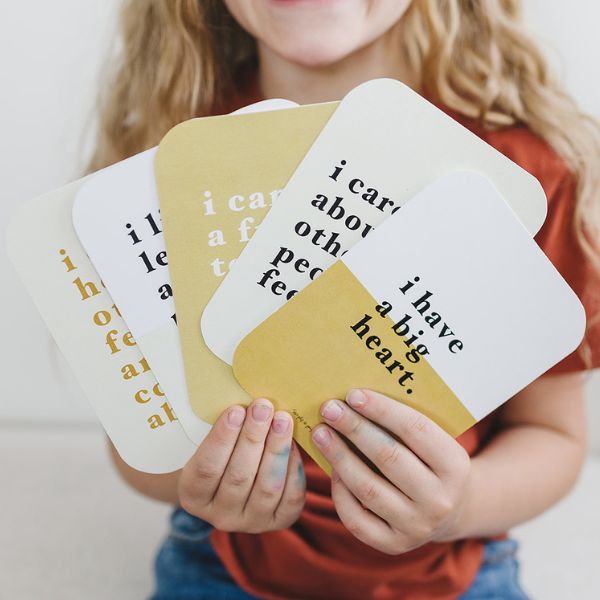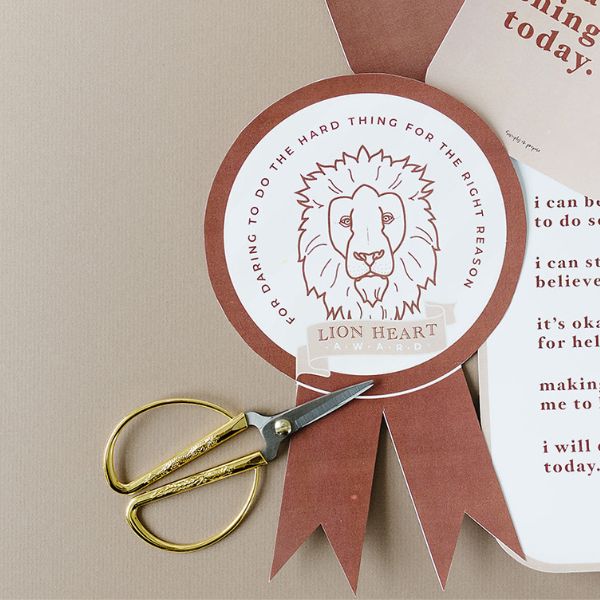I’ll never forget the words that my mother said after listening to me complain about a daughter’s frustrating behavior.
“Make it part of your life for a little while.”
If teaching my children to be honest, empathetic, kind, and hardworking, was important to me, I was going to need to make it a part of my life. So I rolled up my sleeves and went to work.
I began focusing on one value at a time, deliberately teaching it for as long as we needed to and it felt so empowering to take an active role in helping my children develop their best selves. Now it’s my honor to share these ideas with you so that you can “make it a part of your life.”
Why Should I Teach My Child Values?
Children learn from the world around them, and their first and most influential teachers are their parents and caregivers.
Parents who take an active role in instilling values in their children help them develop a moral compass and a sense of right and wrong, which will guide them through life.
Did you know… 80% of children who had a high level of value teaching in their home through childhood, will return to the values of childhood, even if they flounder through adolescence?
As parents, when we do the hard and intentional work of value teaching, our children will have this essential foundation to build from for the rest of their lives.
How Do I Teach My Child Core Values at Home?
As parents, we have a tremendous opportunity to shape the values and beliefs that will guide our children throughout their lives.
Here are my 6 practical strategies and ideas that can help you “make it part of your life” and teach your child the values they need to build a foundation of strong character that will last a lifetime.
1. Lead by Example
Being in control of ourselves is the first principle of positive parenting, and also the first step in teaching our children strong values.
Our children are constantly observing and absorbing our actions, attitudes, and behaviors and so we must start with leading by example.
It is essential that we live up to the values we want to instill in them. Are they seeing us live with integrity, courage, and honesty?
No, we don’t have to be perfect, but they do need to see our honest efforts and how we repair when we make a mistake.
2. Host Family Meetings
Family meetings serve as an incredible platform to discuss and reinforce core values.
They create an environment where open communication, collaboration, and problem-solving are encouraged.
During these meetings, engage your children in discussions about values and encourage them to share their thoughts and perspectives.
I have a whole post “Everything You Need to Know for a Fun and Meaningful Family Meeting” where I share exactly what family meetings look like in our home and how we use them to teach values.
3. Make Learning Fun
Teaching core values doesn’t have to be a boring task. Make it enjoyable and engaging for your children!
Use games, stories, role-plays, and age-appropriate activities to bring the values to life.
If you don’t know where to start, the “How to Teach Your Child a Core Value” series has ideas for fun role-plays, enrichment activities, discussion starters, affirmation cards, and games to help teach the value.
4. Use Teachable Moments
Every day presents countless teachable moments where we can reinforce values. It could be during a conflict with a sibling, a disappointment, or a mistake.
Instead of solely focusing on the problem, use these moments as opportunities for growth and learning.
Guide your children through discussions that highlight the value at hand and encourage them to reflect on how they can handle the situation with the values they have learned.
5. Make Values Relatable
To effectively teach values, we need to make them relatable to our children’s lives.
Use age-appropriate examples and stories that illustrate how these values apply in everyday situations.
For instance, when discussing honesty, share a story about the importance of telling the truth and the positive consequences it can bring.
Relatable examples help children understand the relevance of values in their own lives.
Included in the “How to Teach Your Child a Core Value” series, each value has a list of book, movie, and video resources that help reinforce the value.
6. Celebrate Growth
“When you focus on the good, the good gets better” is one of my favorite phrases and it absolutely applies when teaching our children values.
Acknowledge and celebrate your children’s growth as they embody the values you are teaching.
Recognize their efforts, both big and small, and reinforce positive behavior.
By celebrating growth, we encourage children to continue practicing and embracing these values.
Included in the “How to Teach Your Child a Core Value” series, we have recognition awards you can proudly give to family members exemplifying the present value.
Complete Guide: “How to Teach Your Child a Core Value”
Building strong character in our children is a transformative journey that requires dedication and intentionality. Because I truly believe in the power of parents to teach their children, I have created the “How to Teach Your Child a Core Value” series. These include Courage, Respect, and Empathy.
Each extensive guide covers one essential life value, with ideas for teaching each age and stage. Included is everything you need to make learning and living a value part of your family life:
- kid-friendly definitions
- tips for a family meeting
- phrases to avoid when teaching
- conversation starters
- tips to use role plays
- list of role plays for young kids and teens
- positive affirmations
- books, movies, and real-life examples of the value in action
- fun extension activity
- value recognition award




